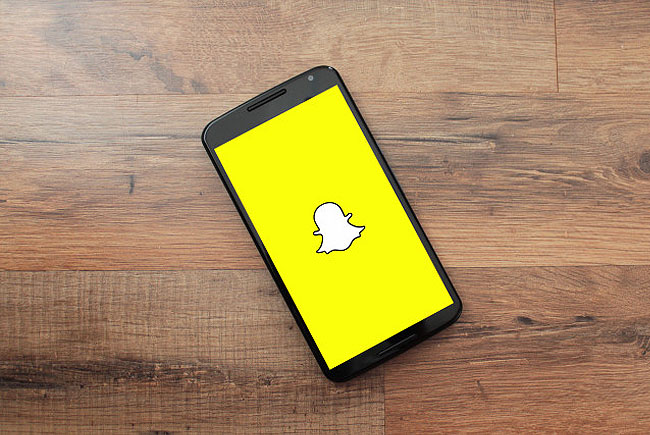
As social video races to feature parity, what's an advertiser to do?
December 7, 2023This column originally appeared on Mediatel.
2016 was no doubt the year of social video; but as more and more viewers turned to YouTube, Facebook, Instagram and Twitter to consume video, these platforms increasingly began to resemble one another.
Historically, social platforms have taken bold steps to attract audiences and ad revenue. YouTube built a creator-first video network, and Facebook opened up a world of digital connection between friends and families.
Instagram unlocked new levels of visual expression, and Twitter provided access to a global real-time conversation. Snapchat burst on the scene with disappearing messages for an audience which had evolved to appreciate an erasable digital history.
Each of these platforms seemed to grow faster than the last, finding success in large part because they experimented with creative new features to attract and retain audiences, and offered a distinct and unique value proposition to users. And subsequently, marketers were keen to experiment with the latest groundbreaking products that captivated audiences en masse.
But in the past year, social video platforms have largely looked to the competition when determining roadmap priorities.
Facebook is testing a dedicated video hub to compete more directly with YouTube, and recently announced new video features (including auto-play sound and the ability to watch a video while scrolling through the News Feed simultaneously) that mimic elements of the YouTube user experience.
Meanwhile, YouTube upgraded its social capabilities, borrowing features from Facebook and Twitter with the launch of YouTube Community.
Twitter launched a generous revenue sharing model for video creators, likely looking to cultivate a creator community similar to YouTube’s.
Live video has been a focus of each social video platform, with Facebook and Instagram adopting the user experience pioneered by Twitter’s Periscope.
Though Snapchat quickly found and retained a large audience through an interface and creative tools completely unlike anything that had come before it, now Facebook and Instagram are increasingly mirroring Snapchat’s key features; Instagram’s CEO admitted to copying Snapchat when it launched Stories, and Facebook is testing a feature identical to Snapchat Stories.
And it doesn’t stop there. These platforms are also engaged in head-to-head combat for dominance on emerging battlegrounds, with 360-degree video and over-the-top (OTT) content serving as prime examples.
YouTube and Facebook made 360-degree video viewing and interaction broadly accessible, while both simultaneously investing in more sophisticated virtual reality technology.
In December, Facebook and Twitter revealed 360-degree live-streaming capabilities, trailing YouTube’s April announcement. And all – including Snapchat – are catering to advertisers by introducing 360-degree ad products.
The race is just as heated in the OTT sphere. Both YouTube and Facebook are reportedly launching OTT offerings this year, and they (plus players like Amazon, Netflix, Apple, and Hulu) will then compete to structure distribution partnerships with television networks, develop proprietary content, and test new monetization options.
Historically, however, copycats have failed. Over the past two years, the industry has watched as a new generation of so-called disruptors – the proclaimed “YouTube-killers” – have failed to live up to their hype.
While Vessel, Watchable, and Go90 each offered a YouTube-like experience, often even featuring popular YouTubers, they lacked the critical mass of audience required to even come close to challenging the behemoth.
More importantly, they didn’t offer audiences an experience different enough from what they could find on YouTube, or the promise of an evolution to come.
The walled gardens themselves are not immune to imitation-as-failure: the annals of tech reporting are littered with shuttered products like Orkut, Buzz, Wave, and Vine.
All of them attempted to cater to emerging consumer trends around social networking and user-generated content, without offering a sufficiently distinct or compelling value proposition to build and retain a committed community.
Today’s leading social video platforms (YouTube, Facebook, Instagram, Twitter, and Snapchat) are increasingly competing amongst themselves for a finite amount of user screen time.
And as consumers’ expectations become more mobile, more visual, more immersive, and more interactive – yet less predictable in pace of adoption or stickiness – platforms are loathe to miss investing in the killer feature critical to capturing attention.
Yet despite these lessons from recent history, we expect the feature parity race between the major social platforms to continue in the year ahead.
Even with the confusion that these mirrored offerings create, the expansion of walled garden advertising is good news for marketers, because collectively, these walled gardens present the richest opportunity for advertisers to reach their core audience at scale – with more sophisticated targeting, higher standards of viewability, and a greater degree of brand safety than what’s available on the open web.
Even with the shift toward feature parity, these platforms still retain audiences with distinct demographics and behaviors, presenting unique considerations for advertisers.
Marketers can maximize impact in this increasingly symmetrical social video environment by striving to be platform agnostic, opting to view campaigns holistically, and embracing the entire ecosystem – with an understanding of each platform’s nuances and distinctions – when developing their video strategies.
If you’d like to connect to learn more about how Pixability’s social video advertising solution can help you or your client’s video advertising, get in touch today.